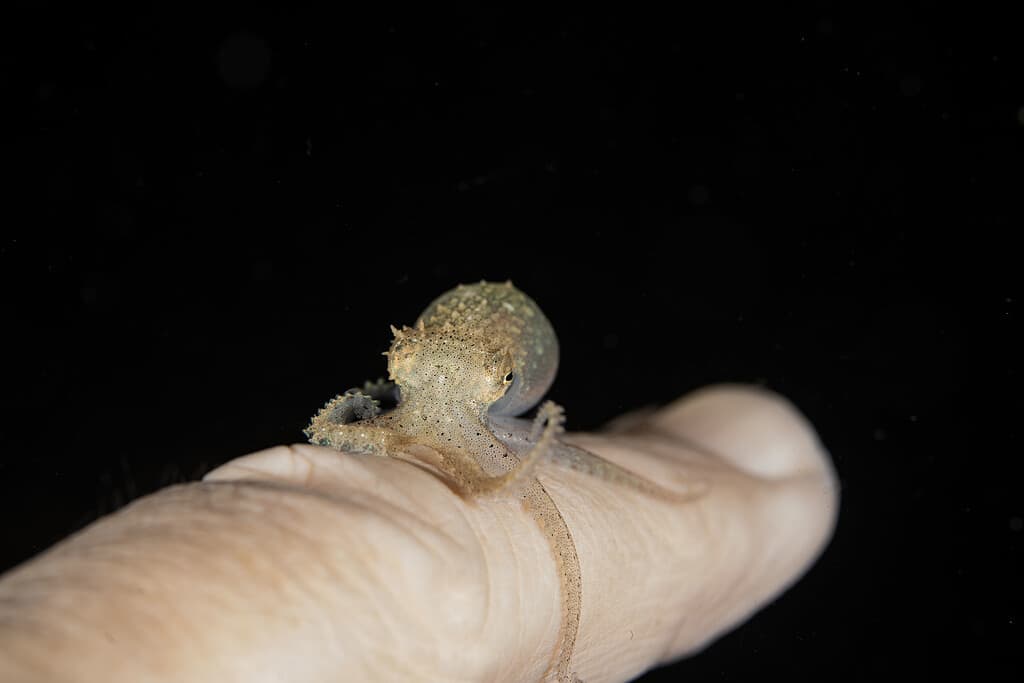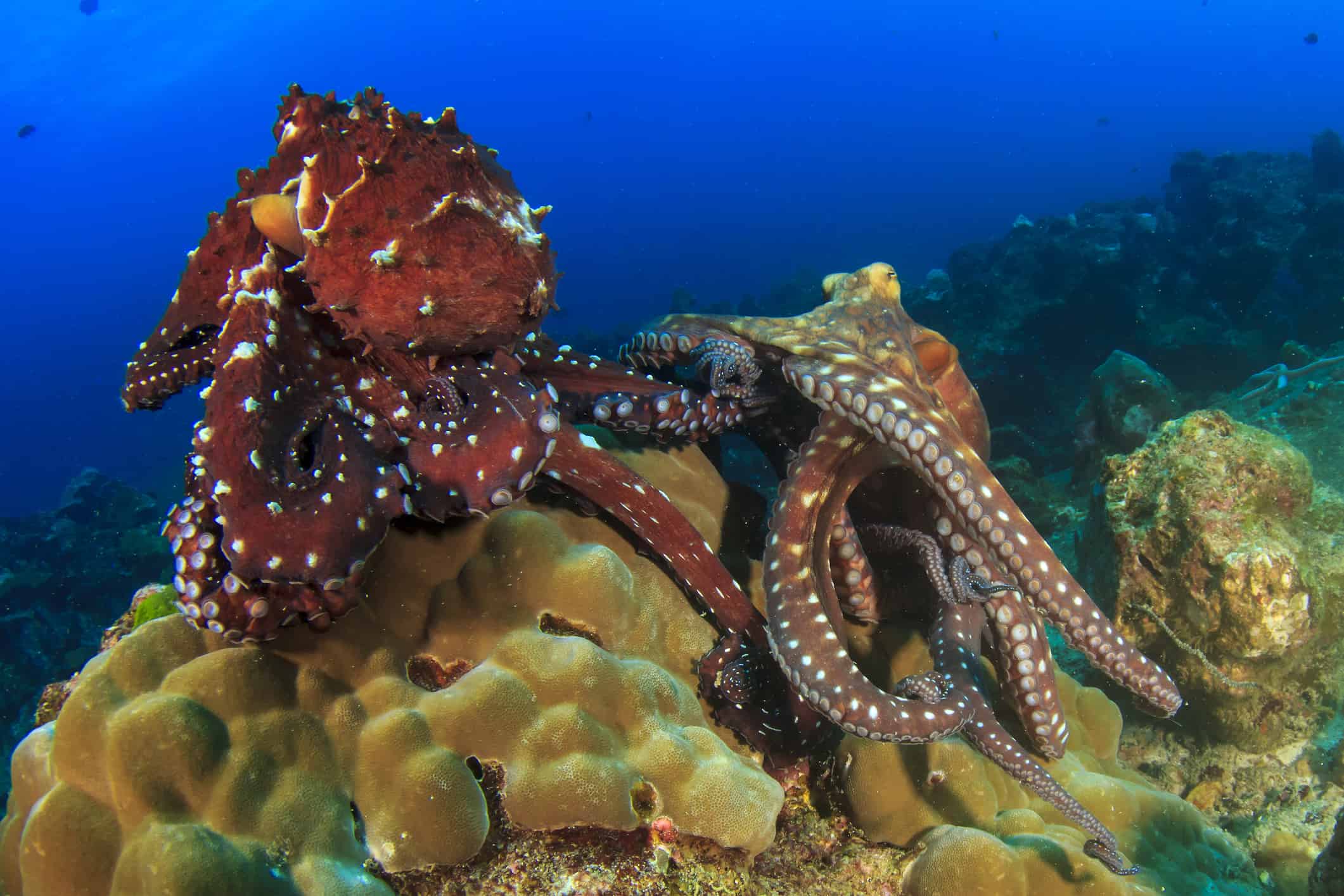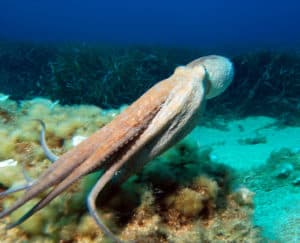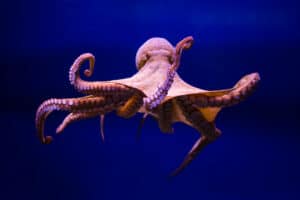Today, a group of 18 scientists published an article detailing why so many octopuses gather at the Davidson Seamount off the coast of California.
Not only is this behavior absolutely remarkable, but this species of octopus was brand new when first discovered by the Monterey Bay National Marine Sanctuary (MBNMS) and Nautilus Live. The team also gave them their common name, pearl octopus. That’s because of the way they nest in rows that look similar to a string of pearls on a necklace. The MBNMS is run by the National Oceanic and Atmospheric Administration (NOAA). The scientific name for this species is Muusoctopus robustus, but not much has been published about them yet.
What Did The Researchers Discover?
The researchers spent over three years monitoring the area and taking notes about the activities of the octopuses. They also recorded information about the other creatures living there and about the surrounding water. The most important discovery about this so-called octopus garden is that it developed near an extinct volcano and the underwater hot springs (or thermal vents) found around it.
The team observed that eggs laid in these warmer waters hatched faster than eggs laid elsewhere, such as the freezing waters that most octopuses usually live in. They found that the eggs hatched in only about 1.8 years, compared to the five years for eggs in colder water. This increase of over 170 percent hatching speed means more eggs are likely to hatch rather than get eaten by predators. Those increased odds mean a population increase for the pearl octopus. A press release regarding the research was written by the Monterey Bay Aquarium Research Institute (MBARI). It explains their findings in great detail, which is easier to read for non-scientist people than the scientific paper that was published.
They also reported that the increase in octopus numbers (about 6,000 of them) in the area also increased the chances of mating. This is wonderful news for the species. Typically, these octopuses would have to travel some distance to find a mate, but not here!

Because of their tendency to live in deep, cold water, not much is known about some octopus species.
©Olga Visavi/Shutterstock.com
Has an Octopus Gathering Been Seen Before?
Yes! This octopus garden isn’t one of a kind, either. Five miles from this octopus nursery, another was found with near more underwater hot springs. Also researchers at the Schmidt Ocean Institute (SOI) also found one of these incredible breeding grounds at the Dorado Outcrop in Costa Rica in 2013. That expedition spent 19 days researching the gathering of octopuses there. During the study, dubbed Octopus Odyssey, the scientists took many exciting pictures and videos of the octopuses.
Do Octopuses Live In Groups?
Scientists previously believed that octopuses were solitary creatures; that is, they lived alone. However, newer research suggests these impressive creatures are much more social than they originally thought. There have now been several recorded instances of octopuses gathering. It seems they use their color-changing abilities to communicate with one another and even to organize hunting parties. More research is being done about the behavior of these amazing creatures. Currently, we know of about 300 different species of octopuses around the world. Scientists believe there may be many more we haven’t found yet!

Many octopus fry are very tiny when newly hatched.
©atese/iStock via Getty Images
What Do You Call Multiple Octopus?
You may have guessed already, but the term for more than one octopus is octopuses. While some may use octopi or octopodes, the generally accepted term is octopuses. A group of octopuses is called a consortium. Newly hatched octopuses are called fry. Some fry come into this world no bigger than a baked bean! Isn’t that neat?
Watch the Amazing Footage of the Octopuses Gathering Below!
Thank you for reading! Have some feedback for us? Contact the AZ Animals editorial team.








